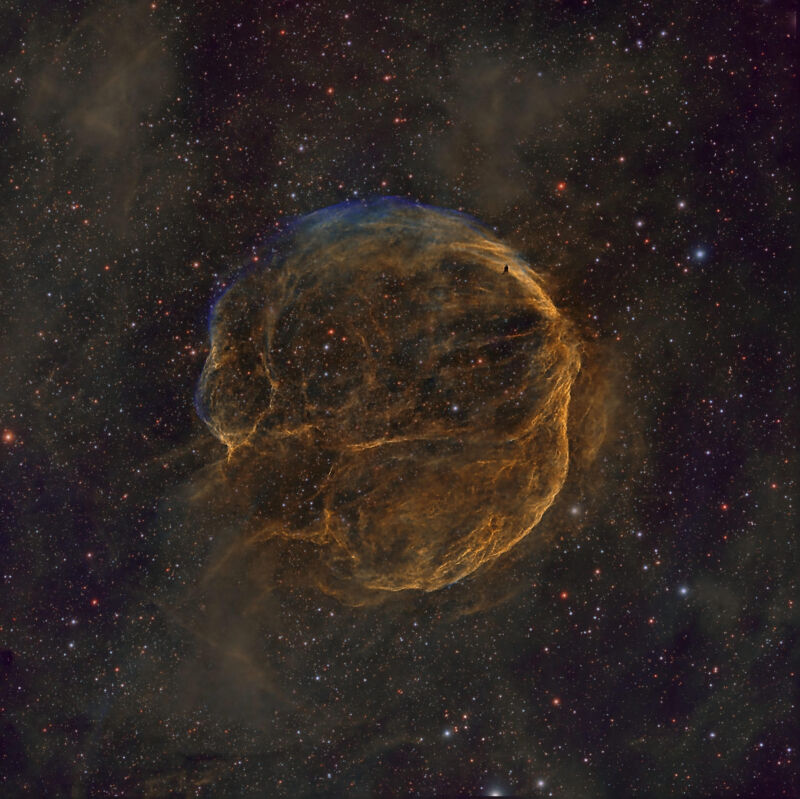
Good morning. It’s November 10, and today’s photo reveals a faint supernova.
It has the formal name CTB-1, and after its discovery in the 1950s, it was thought to be a planetary nebula. (Regular readers will recall that planetary nebulae turned out to not have anything to do with planets.) CTB, in case you were wondering, stands for “Cal Tech Observatory catalog B.”
The object has since been recognized as the remnant of a supernova that is about 10,000 years old and is known colloquially as the “Garlic Nebula.” The reason should be fairly obvious. It also happens to be a difficult astronomical object to photograph, which is why I think today’s submission from Ken Bates is so great.
“It is an extremely faint object, and without narrowband filters, it’s almost impossible to photograph,” Bates told me. Narrowband filters capture specific wavelengths of light. “Narrowband images quite often result in magenta stars, and since I don’t really care for how that looks, I took additional exposures for about 2.5 hours in wide band using RGB filters. I removed the stars from the narrowband image, then extracted the stars from the RGB image, color-calibrated them using data from the GAIA satellite database, and then merged the color-calibrated stars into the narrowband image to give this result.”
The image itself consists of about 51.5 hours of total exposure time taken over a two-week period in late September and early October. Bates shot the Garlic nebula from his driveway in the Black Forest north of Colorado Springs.
Source: Ken Bates.
Do you want to submit a photo for the Daily Telescope? Reach out and say hello.








